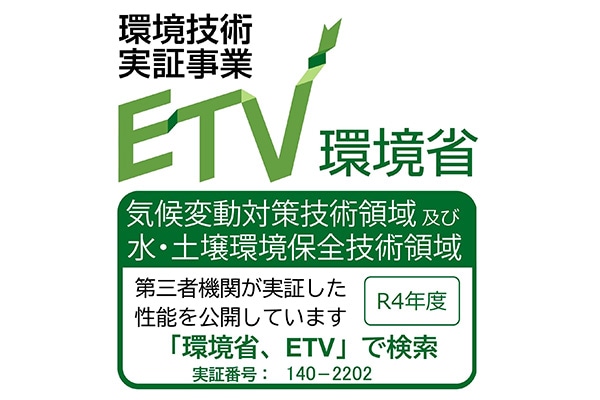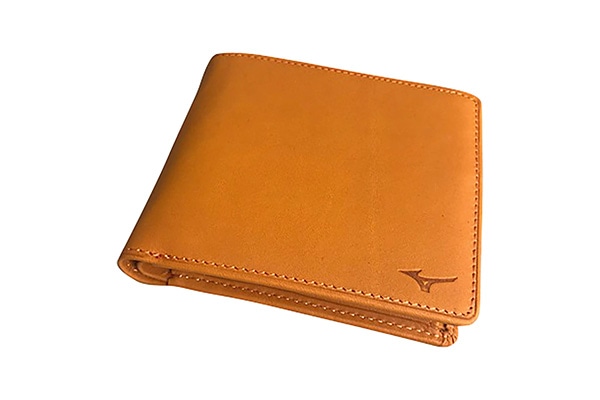Mitigation of Environmental Impact in Products
Basic Concepts
Toward the achievement of its medium- to long-term environmental targets, Mizuno conducts life cycle assessment (LCA) for representative products in each product division. They analyze and understand the environmental burden throughout the entire life cycle of the products, from the procurement of raw materials to disposal, and promote the mitigation of the environmental burden across the entire life cycle.
On procuring raw materials, Mizuno selects recycled materials and plant-based materials. It is also committed to extending the lifetime of its products by increasing their durability and providing high-quality maintenance and repair services.
Understanding the Environmental Impact Throughout the Product Lifecycle
In September 2022, Mizuno launched the Wave Neo Collection, the company’s first running shoes designed to offset CO2 emissions throughout the product’s lifecycle (from raw material procurement to manufacturing, transportation, sales, use, and disposal). The Wave Neo Collection maintains the performance features of traditional running shoes suitable for full marathons while aiming to reduce environmental impact. These shoes reduce CO2 emissions by using environmentally friendly materials such as recycled polyester and plant-derived materials as raw materials, and by using non-dyed upper knit materials to conserve water resources and reduce environmental impact.
Furthermore, in collaboration with the National Forest Foundation in the United States, Mizuno planted approximately 100,000 long pine trees in Chattahoochee, Georgia, between January and February 2022. The purpose of this afforestation project is to absorb the CO2 emitted during the life cycle of these shoes. These trees will continue to absorb atmospheric CO2 for nearly 90 years. As a result, the CO2 emissions from the global sales of the Wave Neo Collection in this fiscal year will be offset by the absorption through tree planting. This initiative marks the first time in Mizuno’s history that a product has been developed to offset CO2 emissions.
Mizuno has disclosed information for balancing the carbon impact.And it has been verified by a third-party organization, DNV Business Assurance Japan K.K.
Mizuno’s disclosure for balancing carbon impact
Third-party verification for balancing carbon impact


For further information,
visit, https://corp.mizuno.com/en/sustainability/environment/waveneocollection
Use of Raw Materials and Recycling
At Mizuno, due to the wide variety of products, it is difficult to list all the types of raw materials used in manufacturing. Therefore, we report on the main raw materials used in our major products, such as shoes and apparel. These materials include plant-derived and recycled materials.
Shoes: We utilize recycled polyester for the upper part, plant-derived materials (Pebax® Rnew® / Rilsan®) for the WAVE PLATE, non-dyed upper knit materials, and algae-based materials called "BLOOM" for the midsole and insole, among others.
Apparel: We use materials recycled from PET bottles, plant-derived synthetic fibers, biodegradable synthetic fibers, and materials reused from rice husks, among others.
On the other hand, we are also advancing efforts in recycling, reusing, and regenerating raw materials, products, and packaging materials. For example, we have started using materials regenerated from discarded plastic films and used PET bottle caps for the packaging of some domestically produced sports apparel. We will gradually transition to this recycled material starting from June 2022, and within a year, we plan to switch the packaging for about 1.04 million apparel products to this recycled material. As approximately 98% of the material per package will be regenerated, we anticipate a reduction of 29.6 tons in CO2 emissions annually.
Mitigating the Outflow of Microplastics from Artificial Turf
Mizuno engages in the development and sale of products related to artificial turf to provide a comfortable sports environment and is committed to environmental conservation through its business. In recent years, one of the issues raised is that microplastics originating from artificial turf become marine debris.
●Artificial Turf "MS CRAFT"
that Reduces Rubber Chip Scattering Mizuno has developed artificial turf named "MS CRAFT" that utilizes specially curled processed piles (blades of grass), resulting in less scattering of rubber chips and a reduced likelihood of outflow. This contributes to the control of microplastics leakage. MS CRAFT employs these special curled processed piles. Compared to conventional straight long-pile artificial turf, by optimizing the amount of curled processed piles, it suppresses the dispersion of infill materials during rainfall, ball bouncing, and other such events. This technology was demonstrated in the fiscal year of Reiwa 4 under the Environmental Technology Verification (ETV) Program by the Ministry of the Environment of Japan, within the realms of climate change mitigation technology as well as water and soil environmental preservation technology.


●Eco line paint for artificial turf ground
Mizuno has developed "ECOMELT-LINE," a water-soluble line paint for artificial turf grounds, responding to the demand to "draw lines freely on artificial turf grounds and cleanly erase them after an event."
While general paints often use resin (plastic) to enhance durability and adhesion, ECOMELT-LINE does not use resin, and even when rinsed with water, it does not become a source of microplastic discharge. Additionally, ECOMELT-LINE is a neutral paint (pH 7.5) made without volatile organic compounds or similar materials, making it friendly to both people and the environment. There’s no need for special chemicals to remove the lines, and they can be easily cleared from artificial turf, allowing for repeated and worry-free use.

White lines (image) created by "ECOMELT-LINE"
Developing artificial turf fillers by recycling used tea leaves
Mizuno collaborated with Ito En Ltd. (hereinafter, Ito En) in developing an artificial turf filler named "Field Chip G (Greentea)," and it did so by using Ito En’s used tea leaf recycling system.*1
Producing enough Field Chip G to cover an entire long pile artificial turf soccer field requires using used tea leaves worth 430,000 pet bottles of Ito En’s 525 ml sized Oi Ocha green tea. Used tea leaves contain carbon dioxide absorbed by their trees. Therefore, covering an entire soccer field with Field Chip G made from used tea leaves would enable reducing about 4.3 t-CO2of carbon dioxide in the atmosphere.*2 In addition, Field Chip G does not smell like rubber and allows reducing the increase of surface temperature by about 7°C compared to that of black rubber chip fillers.
Field Chip G is currently used in the following places, helping protect the environment and making artificial turfs more comfortable: 1) the Play Ground of Mizuno’s after-school care facility "Asolete AFTER SCHOOL" (in Tokyo), 2) a part of the Tokiwabashi area currently under development (in Tokyo), 3) Kashihara Athletic Park (in Nara Prefecture), and 4) the soccer field at Teikyo Nagaoka High School (in Niigata Prefecture).
*1 Used tea leaf recycling system
*2 The carbon content was measured using Yanaco Technical Science Corporation’s Yanaco HCN Coder MT-700 HCN.

Corporate uniforms
Mizuno currently helps workers in various industries, including the construction, manufacturing, and transportation industries, work comfortably by applying the functionality that it has acquired in the sports industry to offering corporate uniforms. Companies have recently come to recognize the importance of valuing their employees’ health from the perspective of company management and have begun paying more attention to the need for strategic health management. Accordingly, more companies now place importance on the safety and comfort of the uniforms that they ask their employees to wear. In addition, to help companies become more environmentally friendly, Mizuno uses environmentally friendly materials, such as recycled polyester and plant-derived polyester, and it also recycles used uniforms. Recycled uniforms are recycled as industrial materials, such as car interior material and polyester fiber.
Initiatives to effectively utilize the offcuts produced in the manufacturing process
●Reusing offcuts from wooden baseball bats
One of Mizuno’s main products is wooden baseball bats. Since wood is a natural material, it may have knots or other imperfections, leading to the creation of offcuts that are unsuitable for use as bats during the manufacturing process. To make effective use of these offcuts, Mizuno leverages its connections with partner companies to process them into various items such as wooden key holders, transforming them into new products.

For further information,
visit, https://corp.mizuno.com/en/articles/0051
●Reusing leftover leather from baseball gloves
Baseball gloves are one of Mizuno’s main products. One issue has been that a large amount of leather material is left unused for making baseball gloves, due to wrinkles or scratches, making it unsuitable for use. Therefore, Mizuno continuously recycles this leftover leather, transforming it into small items such as wallets and business card holders for sale.

For further information,
visit, https://corp.mizuno.com/en/articles/0052
Research into the development of environmentally friendly raw material
Mizuno conducts research into the development of nonpetroleum-derived raw materials as a substitute for petroleum-derived raw materials. Mizuno currently puts effort into conducting research into the development of plant-derived raw materials, and it sees nanomaterials, such as cellulose nanofibers, as being promising candidates.
Future issues to be addressed
Of the entire amount of GHG emissions that Mizuno’s business activities currently generate, indirect emissions that fall into the category of Scope 3 account for about 97%. Particularly, because about 80% of those indirect emissions are related to purchased products and services, Mizuno recognizes the importance of reducing greenhouse gas emissions through their products. We will continue to promote product planning and development aimed at reducing GHG emissions.
